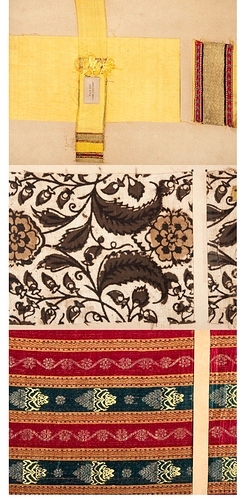The Digital Archive applications for natural dyes, textile design, botanical paintings and herbarium (Economic botany and type specimens) of Botanical Survey of India (BSI) was inaugurated by Sri A.D. Choudhury, Director General, National Council of Science Museums, Kolkata in presence of Dr Ashiho Asosii Mao, Director, Botanical Survey of India, Kolkata on 24th August 2021. The entire collections can be viewed on htps://archive.bsi.gov.in, a step towards achieving ‘Digital India Programme’ by Botanical Survey of India.
The e-Archives of BSI has a user-friendly interface that contains excellent collections of botanical painting, textile designs of colonial India. Life size botanical paintings of plants made during colonial period is one of the rarest collections which showcase the brilliant artistic talent of the then Indian painters as well as the Plant diversity. “The paintings that remained hidden for centauries are now available in a single click and will be very useful to nature lovers, plant researchers, armature botanists and students working on botanical paintings” said Director General, National Council of Science Museums, Kolkata, Sri A.D. Choudhury. By launching the e-archives of BSI, it has fulfilled a long-cherished expectations of botanical fraternity said BSI Director, Dr A.A. Mao. He also emphasized that, Botanical Survey of India has been the custodian of more than 3 million plant specimens which is the largest repositories of the country. The organization serves the nations through documentation of country’s plant diversity. India is now the second Asian country after China to provide open access to its huge collections of type specimens.
The original set of 15 volumes of Thomas Wardle’s specimens of “Fabrics dyed with Indian Dyes” are available with the Botanical Survey of India which is the most comprehensive and complete documentation on this subject. The invaluable information on 4100 samples of dye patterns, extracted from 64 plants, depicting Indian dying traditions compiled by Thomas Wardle in 19th century. Similarly, 18 volumes of textile designs containing about 1700 samples, starting with turbans and ‘garment pieces’ for men and women, which includes sari, dhoti and lungi are available with Botanical Survey of India. These are made up of silk, cotton, muslin and wool fabrics with captioned ‘Textiles manufactures and costumes of the People of India’ compiled by John Forbes Watson in 1866 and 1874. Historical evidences suggest that since ancient times, Indian have been known to use traditionally Indigo, Madder, Kermes etc as natural dyes. These dyes were popularized by Indians to all over the World not only for colouring garments, but also used in medicines, for camouflaging during battle.
Original set of Roxburgh’s drawings consisting 2532 drawings is preserved in the Central National Herbarium, Howrah (CAL). India is the second country after United Kingdom which made Roxburgh drawing online to the general public, said BSI Director Dr A.A. Mao. The digitized materials of the archives are the most accurate means of recording natural specimens and also easier to store and transport.
William Roxburgh (1751–1815), the Scottish Botanist and Physician, known as ‘Father of Indian Botany’ due to his immense contribution in plant taxonomy of India. While describing Indian species, Roxburgh prepared these life-size coloured drawings using Indian artists. But unfortunately nothing is known about Roxburgh’s Indian artists. There are 3280 large botanical paintings other than Roxburgh paintings drawn by Indian artists. The name of these less known Indian artist are Lutchman Singh, Gopal Dass, K.P. Dass, A.N. Banerjee, Vishnu Prasad, Gorachand, D.N. Chowdhury, H.B. Dass, Madhab Chandra, L. Singh, S.B. Ghose, F.B. Das, A.D. Molla, Tulsidas Pal, Chunnilal Das, Kedarnath Pal, Manveer Singh and Gopal Chandra Das who remained in obscurity for centuries. This portal is also a tribute to these artists, who made their works immortal.
The economic botany specimens contain the commercial important plants in different categories such as Gum, resin, natural dye, fiber, cereals, pulses, medicinal and timber yielding plants etc. These were initially made by Sir George Watt (1851 –1930) while collecting plants and plant based economic products throughout the then British India. Subsequently, these collections were enriched by Sir George Watt, I. H. Burkill, S. A. Barber and K.S. Srinivasan and many others. The economic botany herbarium databases contain about 20,000 representative herbarium sheets. Besides, more than 27,000 type specimens of Phanerogams and 1700 type specimens of Cryptogams is available in the web portal.
In coming days, BSI is determined to provide a free access to all important collections available in its herbaria across the country. “In the pose Covid-19 pandemic scenario, this online database will be an immense help to scientific fraternity working in plant taxonomy and other applied field” said BSI technical section in-charge, Dr S.S. Dash.
